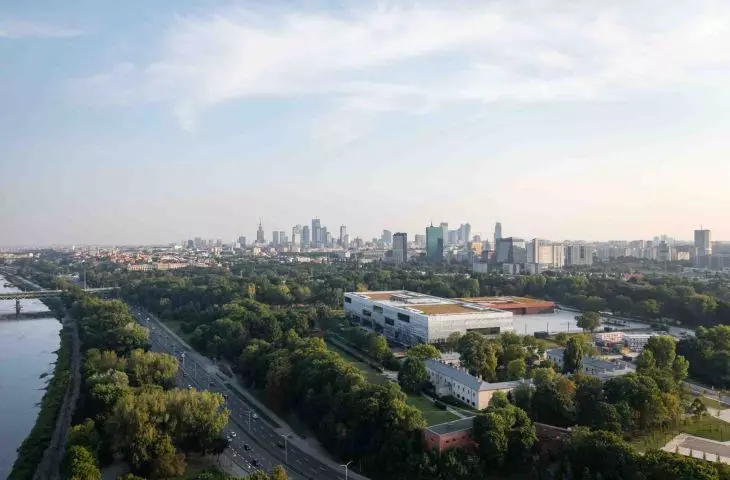Designed by {tag:pracownie}, the Polish History Museum in Warsaw has been included in the prestigious list of the World's Most Beautiful Museums, created as part of this year's Versailles Prize! The results of the selection were presented on June 13 in Paris.
The VersaillesPrize (Prix Versailles) is an event that has been taking place for 10 years under the auspices of UNESCO, in which the most beautiful buildings in the world are selected. To date, awards have been given in eight categories covering both commercial and public buildings. These included hotels, restaurants, shopping malls and stores, transfer stations, airports, university campuses and sports facilities. This year, in connection with the organization of the anniversary edition, for the first time the award was given in a new category - museums.
Museums provide special conditions that stimulate intercultural dialogue. Supported by modern technologies, modern museums are even more capable of creating immersive experiences, participating in the dissemination of knowledge and shaping the tastes of the public. In creating the list of the World's Most Beautiful Museums, we wanted to emphasize the momentousness of that feeling of awe that makes us lift our eyes, feeling amazement," he said on June 13. Jérôme Gouadain, Secretary General of the Prix Versailles.
Museum of Polish History in Warsaw
Photo: Daniel Ciesielski © WXCA
Among the elite group of the seven Most Beautiful Museums in the World is the Warsaw Museum of Polish History, designed by Polish studio WXCA and opening in September 2023. MHP is the first Polish building to be awarded the Prix Versailles.
The museum's mission is subtly engraved on the walls of the Polish History Museum's stone monolith. The concept of the WXCA studio was to cover the facade with slabs of marble arranged in horizontal bands, which emphasize the layered structure of the stone and the differentiation of individual compositions through changes in tonality and texture, we can read in the justification of the jury.
Museum of Polish History in Warsaw
Photo: Daniel Ciesielski ©WXCA
According to the competition's jury, the history of Poland, the presentation of which is the mission of the museum unit in question, can be learned not only in the exhibitions, but also by looking at the facade. More than 27,000 square meters of marble slabs were used, dividing the facade of the Polish History Museum into six horizontal zones, varying in texture, veining and color. The latter is of considerable importance, as the marble slabs imported from Portugal have been arranged from the darkest, laid near the building's foundations, to almost white, located at its top - thanks to which the seemingly heavy, monolithic mass of the museum's upper floors seems to melt in the air.
Museum of Polish History in Warsaw
Photo: Daniel Ciesielski ©WXCA
However, it was not the effect of lightness that became the reason why the marble cladding of the Polish History Museum was noticed by the competition's jury - we're talking primarily about the reliefs made in it, whose form refers to the most important objects from the tradition of Polish architecture. Those looking closely at the stone facade will find references to the Gniezno Doors, Gothic crystal vaults, the Sigismund Chapel or the Spodek Hall. It is worth mentioning that in addition to its exhibition function, the Museum of Polish History is equipped with concert, theater, conference and educational halls. There is also a library within the walls of the MHP. The building has become part of a larger museum complex located in the Warsaw Citadel area. Anna Cymer wrote about the Polish Museum Island in Warsaw in the pages of A&B.
Museum of Polish History in Warsaw
Photo: Daniel Ciesielski ©WXCA
In addition to the Polish History Museum, the list of the World's Most Beautiful Museums in 2024 includes the Great Egyptian Museum in Giza (design : Heneghan Peng Architects), the Earthquake Memorial Museum in Smritivan, Bhuj (design.: Vastu-Shilpa Consultants), the Museum of Oman Through the Ages in Nizwa (design: Cox Architecture), the A4 Art Museum in Chengdu (design: Tektonn Architects), the Simose Art Museum in Hiroshima (design: Shigeru Ban Architects) and the Paleis Het Loo in Apeldoorn (design: KAAN Architecten).


















































